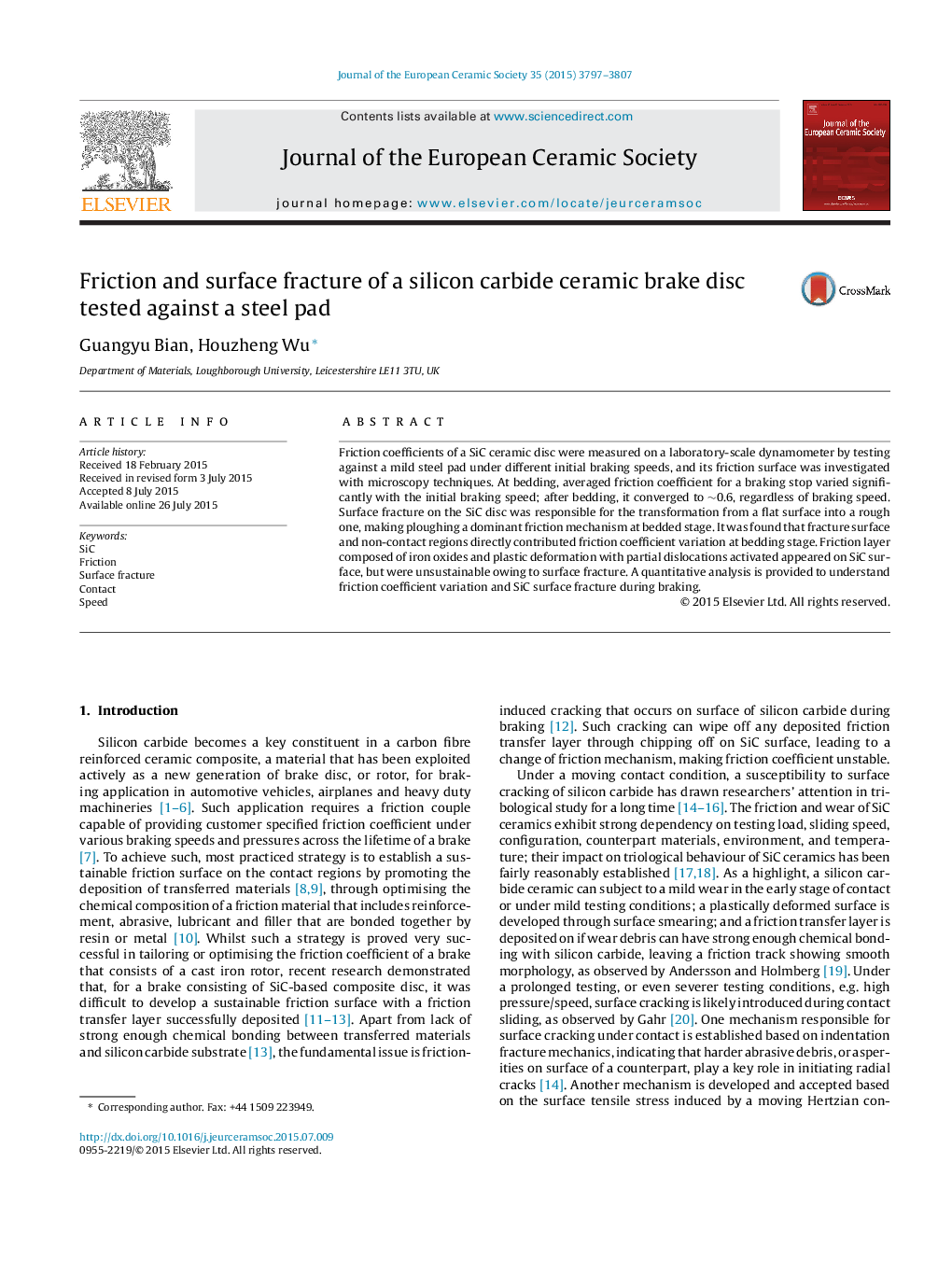| کد مقاله | کد نشریه | سال انتشار | مقاله انگلیسی | نسخه تمام متن |
|---|---|---|---|---|
| 1473990 | 991072 | 2015 | 11 صفحه PDF | دانلود رایگان |
Friction coefficients of a SiC ceramic disc were measured on a laboratory-scale dynamometer by testing against a mild steel pad under different initial braking speeds, and its friction surface was investigated with microscopy techniques. At bedding, averaged friction coefficient for a braking stop varied significantly with the initial braking speed; after bedding, it converged to ∼0.6, regardless of braking speed. Surface fracture on the SiC disc was responsible for the transformation from a flat surface into a rough one, making ploughing a dominant friction mechanism at bedded stage. It was found that fracture surface and non-contact regions directly contributed friction coefficient variation at bedding stage. Friction layer composed of iron oxides and plastic deformation with partial dislocations activated appeared on SiC surface, but were unsustainable owing to surface fracture. A quantitative analysis is provided to understand friction coefficient variation and SiC surface fracture during braking.
Journal: Journal of the European Ceramic Society - Volume 35, Issue 14, November 2015, Pages 3797–3807
